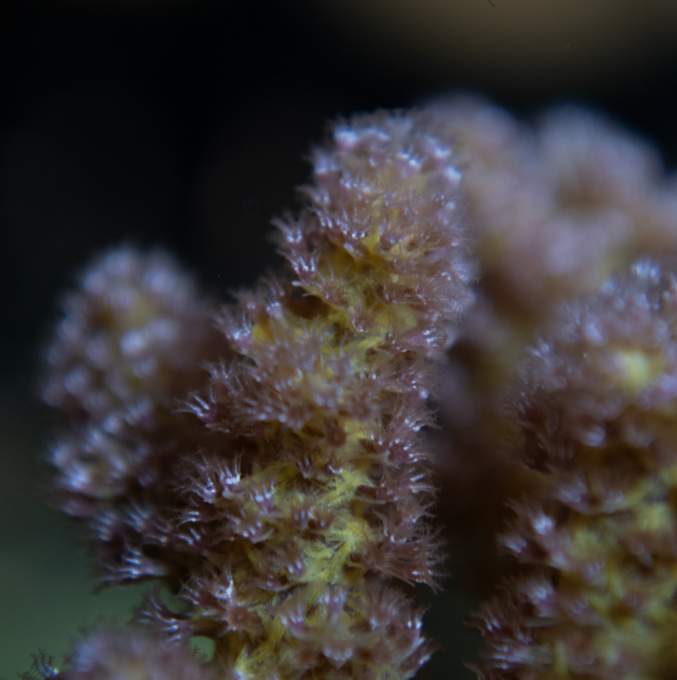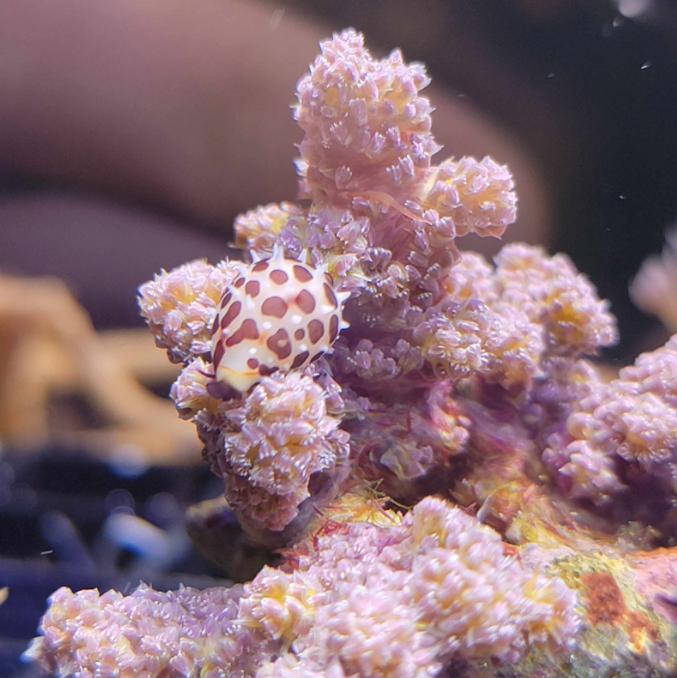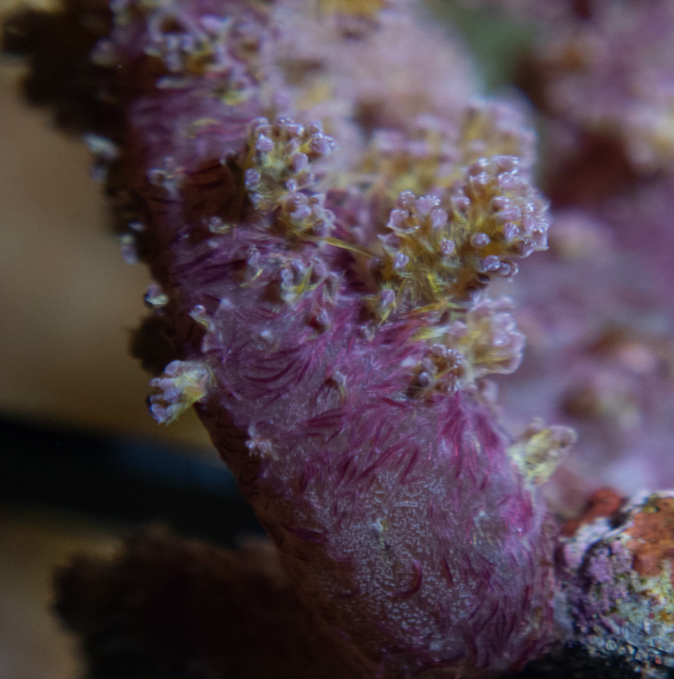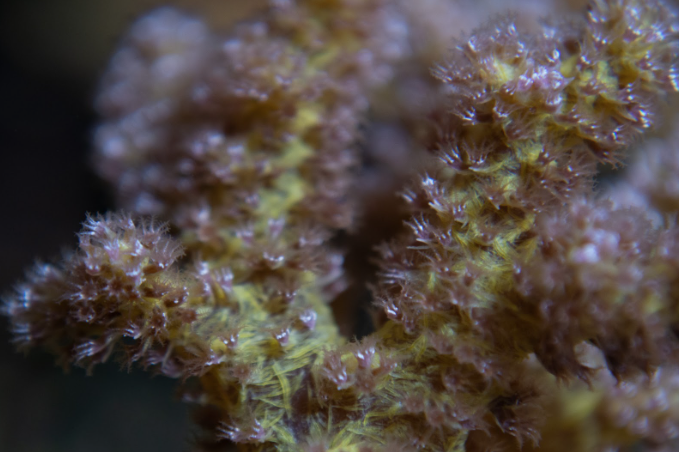At the Reefing USA show in STL, I encountered some unique specimens that caught my eye at Gabe Pommier’s booth, Oceanic Gardens. He brought two varieties of Stereonephthya, which before the show I had only seen online.
Many of you may be familiar with this species via the circulation of the famous “Koji Wada pink Nephthea.” This coral has been mislabeled in the public sphere since no “nephthea” formally exists. While the Koji Wada is a gorgeous, nearly uniform pastel pink, the stunning contrast makes the specimens I picked up from Gabe unique.

One has a bright yellow base with polyps, a light pink, and silver tips. I have seen this phenotype labeled “pink lemonade” in the trade but have never seen them for sale. The other is almost the opposite, with a bold magenta base and yellow-based polyps ending in a silver/white tip. I have seen ones like this called “mulberry.”
Despite dipping and scrubbing the specimens after several days, the mulberry piece started to slump, which was unusual since the other specimen seemed to be doing well. Upon closer examination, I found a tiny snail with an intricate shell pattern I had never witnessed before. After talking with my good friend Sean Ono (Cristata Reef), he identified the snail as Diminovula cf. margarita. This snail is in the family Ovulidea and is often known as a false cowrie. Each of these species typically preys on a distinct neptheid. Due to its small size and the dipping I conducted, I suspect it likely came in as an egg in one of the crevices that could not be reached when cleaning the frag.

One of the difficulties people have with culturing Stereonephthya is their reported slow growth rate. It is believed that Steroenpethya benefit substantially from heterotrophic nutrition and rely on consuming large amounts of prey in the wild. Due to the fact I feed my system heavily with a wide array of different micron-sized foods, I have yet to experience this. I have seen noticeable growth in the pink lemonade. The mulberry is still recovering after some tissue damage from the snail and will hopefully begin to grow for me soon.
Apart from my feeding, I am also experimenting with keeping them in high PAR and flow, as I have had lots of success with other soft corals this way. Typically, I see people keep them in lower PAR due to the belief they are found in deeper waters. I am unsure where they are found on the reef, but a quick Google search reveals an equal number of pictures showing colonies growing on the sides of reefs in similar spots where you would find species such as Dendronephthya as well as in high-light regions at the top of reefs. Thus, it is worth exploring whether higher PAR positively correlates with this species’ perceived health.





Gabe gets in some of the weirdest crap, gotta love it. Those Stereonephthea look like they’re made of paper mache haha